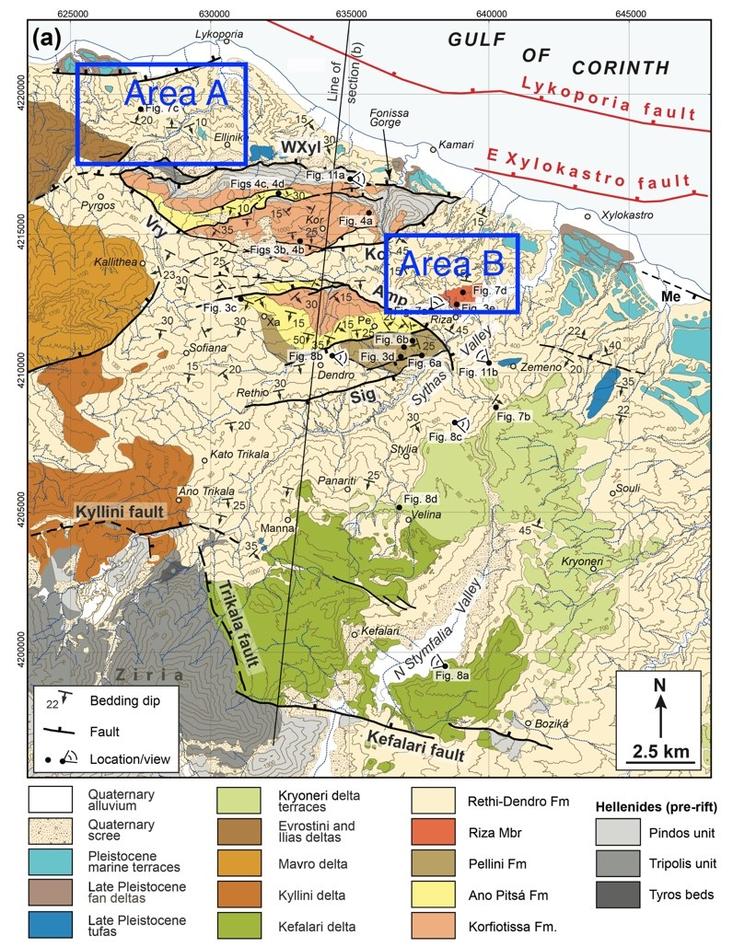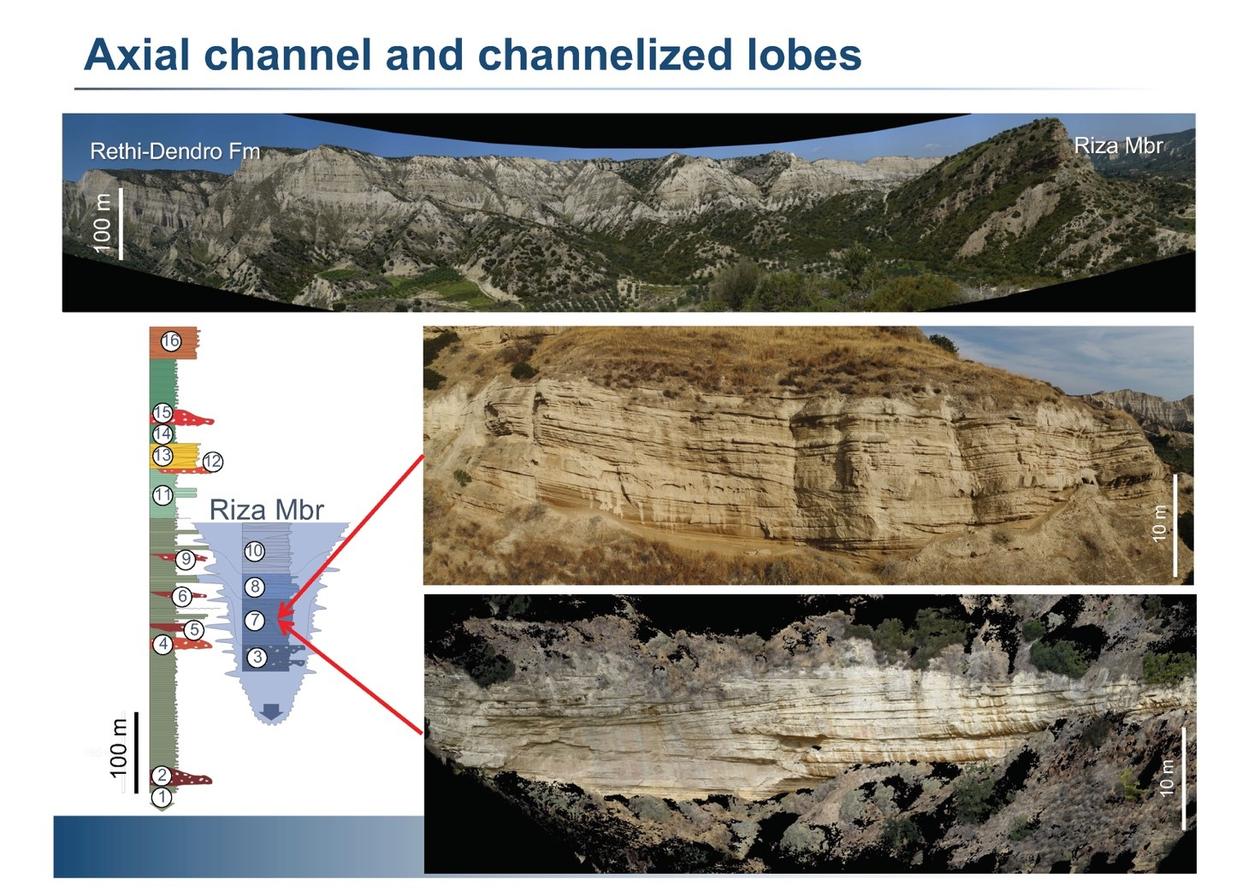Syn-rift deep-water channels and lobes of the Corinth Rift: Seismic modelling of outcrops and comparison with recent deposits in the Gulf of Corinth, Greece
Main content
Project Description
Deep-water depositional systems are some of the largest on the planet and transfer vast volumes of sediment from the continents to the deep ocean. Understanding their geometry and evolution is significant for energy resources, for sequestering CO2 and for understanding past climate, environmental and tectonic change. Some of the least well-studied deep-water systems are in rift basins, despite the fact that many rifts evolve to become sediment starved and contain significant thicknesses of deep-water deposits.
This project will be part of a new Research Council of Norway funded project, DeepRift, that aims to understand the controls on deep-water syn-rift deposits. This masters project will use outcrop data from seismic-scale exposures of Plio-Pleistocene deep-water channels and submarine fans from the onshore Corinth Rift, Greece to investigate their geometry and stratigraphy. Seismic modelling will be used to investigate what level of sedimentological and stratigraphic detail can be resolved at a range of frequencies, and with respect to lithology/geometry/petrophysical properties. The results of the seismic modelling experiments will be compared to modern deep-water syn-rift depositional systems in the Gulf of Corinth based on high-resolution seismic and bathymetry data, and to Late Jurassic deep-water depositional systems imaged in industry seismic data from the northern North Sea.
Interested geology or geophysical students can contact the supervisors for more discussion and fine-tuning of the project based on their specific interests.
Proposed course plan during the master's degree (60 ECTS):
To be decided with the candidate depending her/his background (geophysical or geological). As an example the following would be a likely choice:
GEOV352 (5) Field course in reservoir geology
GEOV362 (5) Integrated field course in tectonics and sedimentology
GEOV364 (5) Advanced basin analysis
GEOV300 (5) Selected topics in geoscience
GEOV360 (10) Advanced clastic sedimentology
GEOV361 (10) Sequence stratigraphy
GEOV272 (10) Seismic interpretation
SDG207 (10) Energy transition
Prerequisites
The proposed project is suitable for both geology and geophysics students and can be tailored to suite either backgrounds. Ideally we would like both a geological and geophysical student to work in parallel. Geophysicists with a strong interest in seismic interpretation and sedimentary geology, or geological background and a strong interest in sedimentary geology and seismic interpretation are encouraged to apply.
The students will participate in the DeepRift project that involves a consortium of companies working on the Norwegian continental shelf and a group of universities from Norway, UK, France, Greece and USA.
External data
Data is available in UiB/GEO
Field- lab- analysis work
Field trip to the Corinth Rift Greece to familiarise with the outcrops to be modelled and check geological and seismic interpretations.

